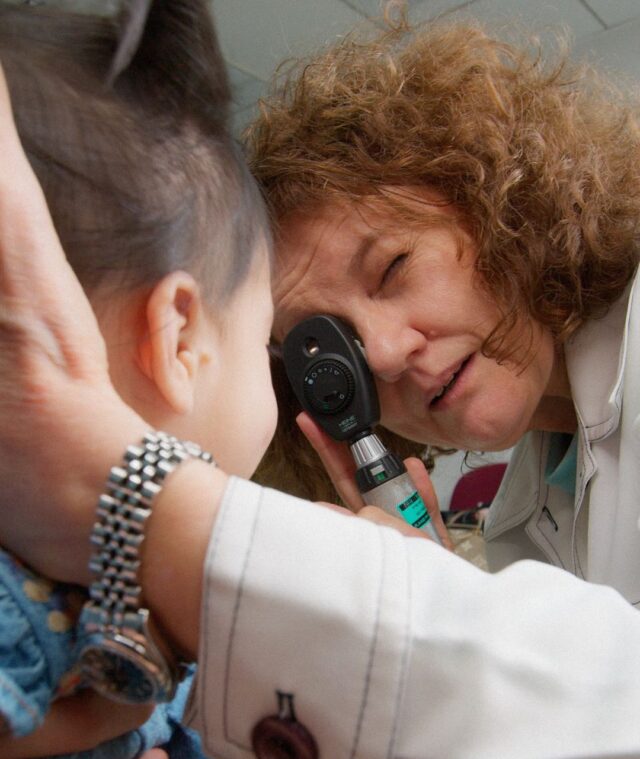Photo by Katelyn Greer on Unsplash
Cataracts are a major cause of treatable vision loss and even blindness in older generations. It can affect over 50% of people over 60 and are usually associated with aging. Less commonly this may affect younger people, too.
Even when symptoms are mild, cataracts can make everyday life very difficult. Reading, driving and watching television, for example, can all become hard to do. If you or a family member are affected by cataracts, you will want to know more about how they can be managed and the treatment options available, including cataract surgery.
What are cataracts?
Cataracts refer to a clouding of the natural lens found inside the eye. This clouding blocks the amount of light focusing on the retina. As a result, the brain receives a dulled, blurred image.
There are different types of cataracts, categorized by where in the lens they begin to form. Some cataracts form at the back of the lens, some deep in the center, and others start on the periphery of the lens, working their way inwards. All result in clouding and blurred vision.
What causes cataracts?
In our earlier years, a healthy lens is soft, clear and flexible. As we mature, the lens begins to stiffen and turn gradually yellowish, then eventually cloudy, usually in our 40s or 50s. This is why many people who have had good vision all their lives may start to need different distance glasses or start to read easier at this point. Cataracts can continue to get worse to the point where glasses no longer suffice and other treatments must be sought.
In most cases, cataracts are a natural symptom of aging. However, there are some other factors that can lead to the formation of cataracts. People with diabetes can develop subcapsular cataracts which are the type that form at the back of the eye. Other people taking steroid medication are also at a higher risk of getting this type of cataract. There are some inherited genetic disorders that could increase the risk of cataracts as well.
Research is ongoing, but there is currently no definitive answer to the question of whether cataracts can be prevented or the risks lowered. The most sensible precaution to take is to undergo regular examinations at an eye care center.
What are the symptoms of cataracts?
The primary symptom of cataracts is blurred vision. At first it will probably feel like you are looking through a cloudy pane of glass. However, there are other symptoms that may occur alongside this:
- Halos or glare around bright lights
For example, you may notice that you now struggle to cope with very bright sunlight or the glare from oncoming headlights while driving.
- Loss of color perception
Colors may not seem as bright or vibrant as they once did. Blues are the shades most commonly affected.
- Loss of depth perception
It becomes increasingly difficult to judge distance correctly.
- Night blindness
You become aware that you struggle more to see in low light.
- Eye fatigue and headaches
You may get sore, tired eyes and frequent headaches.
- Double vision – monocular – one or either eye’s images have “ghosting” or “doubling”
This usually affects one eye at a time.
How can I be sure I have cataracts?
You cannot self-diagnose cataracts. If you have any of the symptoms above, it is important you go through an eye examination. The eye doctor will be able to determine whether you have cataracts by examining your eyes with an ophthalmoscope or a Biomicroscope – called a slit lamp. They will also ask you to complete a visual acuity test which determines your level of vision by asking you to read ever-smaller letters. A Contrast Sensitivity & Glare Test confirms the quality loss of low-light vision.
Managing symptoms
There are no medications, exercises or eye drops that can help cataracts, nor are there any laser treatments available for this condition.
At first, the symptoms of cataracts may be managed by wearing eyeglasses, with progressively stronger prescriptions as necessary. It is almost inevitable, however, that surgical treatment will eventually be needed to restore vision. These treatments are usually highly effective.
Surgery for Cataracts
-
The advantages
After surgery, your vision will be much clearer and there should be no need for thick glasses. Once you have recovered from surgery, many of the activities you have stopped being able to enjoy will be accessible once again. Your ability to judge distance well will return, too.
If your cataracts have affected the appearance of your eyes, you will notice this improves after surgery as well. Your eyes should look “normal” again.
-
The procedure
Cataract surgery is a simple two-step process completed using a local anesthetic, unless anaesthesia is preferred. The technique is called phacoemulsification.
First of all, a small incision of around 2-3 mm is made on the side of the eye in a stair-stepped shape. This incision is used to access the cataract and break it up using high energy sound waves. It can then be suctioned from the eye gently.
Because the eye’s natural lens has now been removed, a new artificial lens must be implanted. This is called an intraocular lens or IOL.
After using this special “stair-stepped’ incision, you may need one, several, or even no sutures. The incision heals fast and is mostly self-sealing.
-
Post-surgery treatment
You should heal fast after uneventful cataract surgery. Most patients can return to normal life within a day or two, and rarely more than a week. With new lenses in place, vision improves almost immediately, too. Intraocular lenses require no long term care post-surgery, which is one of their great advantages.
If surgery is successful, you are unlikely to need any further treatment, other than perhaps still needing to wear reading glasses, or driving glasses. Occasionally some patients experience clouding of the tissue (called a capsule or “bag”) that holds the IOL. This can usually be easily and painlessly treated using laser treatment.
Beyond surgery
Cataracts make life difficult, but as you can see, there is a straightforward surgical treatment available that should improve quality of life for many cataract patients. Talk to our team at Gulf Eye Center about whether this is the right option for you.








